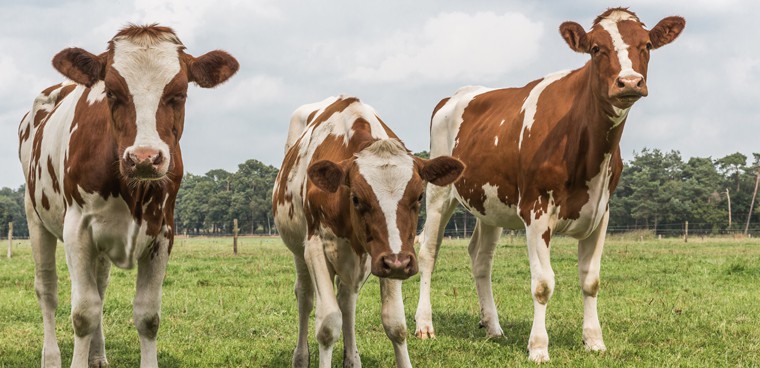
The USDA’s Agriculture Marketing Service is considering changing and clarifying the rules to transition dairy livestock to certified organic. The proposed rule was announced on April 28, and people will have 90 days to provide comment until July 27. The update seeks to further clarify the one-time exception that allows dairies to transition their herd to organic.
The current standards require that dairy livestock be treated organically from the last third of gestation (i.e., the mothers have to be organic before the babies are born). There is a one-time exception that allows a dairy to transition their herd to become organic. There have been some problems with this version of the rule. Some producers interpret “herd” differently, claiming that every year when they bring in new livestock, they technically have a new herd. This means that some producers are consistently transitioning their livestock to organic. Producers who transition their livestock continuously get the benefit of buying animals that are not organic and so are less expensive. There are concerns that this practice is unfair when some dairies are under regulations that do not allow them to take such measures and that it weakens consumer confidence in certified organic dairy.
The National Organic Standards Board (NOSB) proposed the measure. The NOSB is a Federal Advisory Committee and has to include certain members of the organic community, including farmers, processors, a scientist, and a certifying agent. They are part of the National Organic Program, which determines how organic products are developed in the US.
Diving into this sort of policy can be a little mind numbing, so we’ll break it down as briefly and straightforwardly as possible: The proposed rule clarifies that each producer can transition their livestock to organic once. All livestock must be transitioned over the same 12-month period and all transitions must be completed at the same time. Note that this applies to producers. Some argued for each dairy farm getting to make the transition, but the board was concerned that corporations could then transition all their farms separately. Under the new rule, a corporation that owns many dairy farms has to transition all livestock on all their farms at the same time.
Whew, okay. What next? After a dairy farm makes the transition, the newly organic livestock only remain organic if they are managed organically and stay continuously on an organic farm. This means that one organic farmer can buy livestock from another and the animals will stay organic. Or, say one producers moves from one organic location to another. Their livestock are still organic. Once the dairy has made the transition, they can only get new organic livestock either from other dairies with transitioned livestock or by ensuring new livestock is treated organically from the last third of gestation. In other words, once you go organic, you cannot bring animals that are not organic onto your farm. This might increase price, but will also help level the playing field between larger and smaller dairies.
Livestock must complete a full year of the transition process before their milk can be labeled as organic. So, ten months into the process, the milk produced by transitioning animals won’t be considered organic yet. There are also a series of regulations dairies have to follow during the transition process, like ensuring their animals are feeding on crops that are either certified organic or in year three of the transition process to organic—essentially, if crops started going organic the year before? Your livestock can’t eat those crops and still be considered organic.
Clarifying these rules should close some of the loopholes producers have been using to save money in their organic ventures. It’s easy to see why dairies want to tap in the market. According to the latest Organic Trade Association survey, in 2014 the organic dairy sector experienced an almost 11 percent increase its sales to $5.46 billion.
Have strong feelings or concerns about the proposed rule? Go to the official regulation.gov page and leave a comment, or mail Scott Updike, Agricultural Marketing Specialist, National Organic Program, USDA-AMS-NOP, Room 2646—So., Ag Stop 0268, 1400 Independence Ave. SW., Washington, DC 20250-0268.




